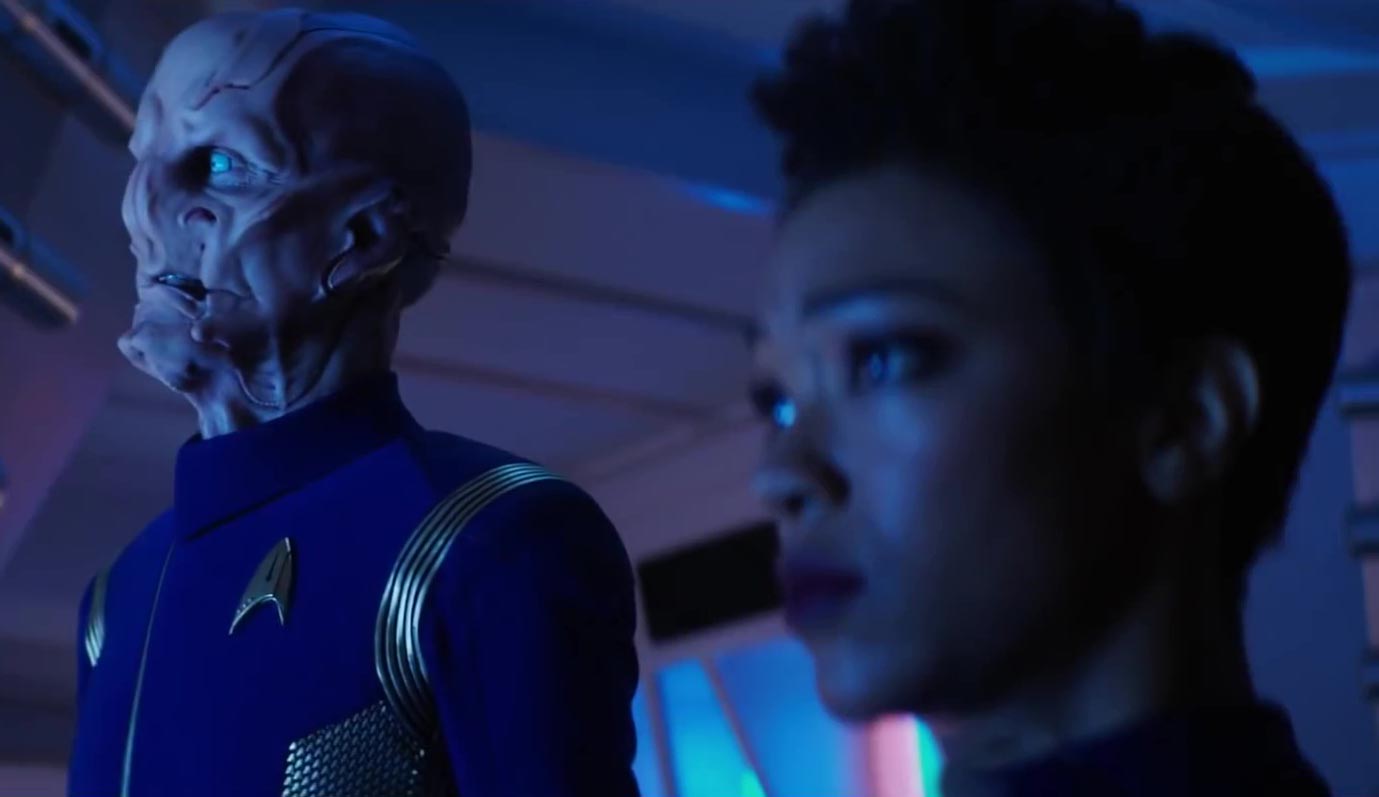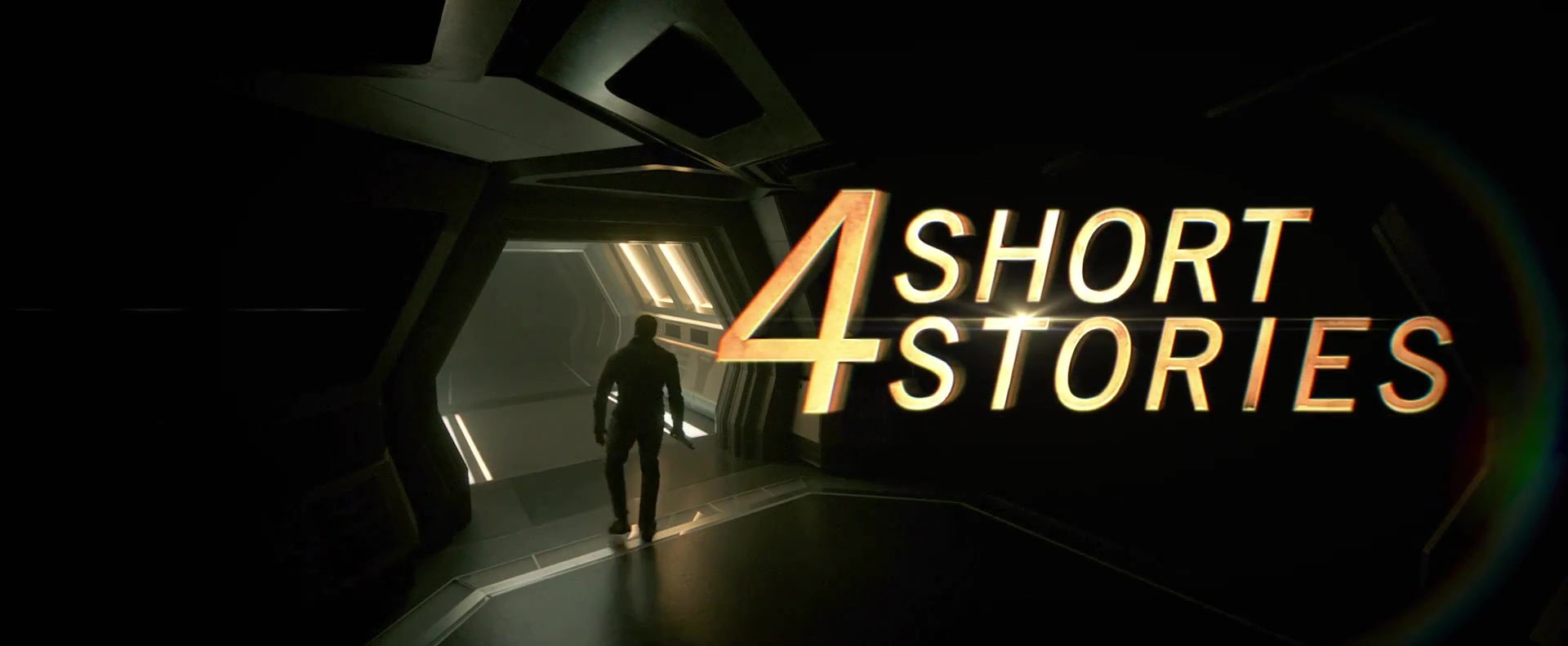After Saturday’s big Star Trek: Discovery panel at New York Comic Con, the cast and creative leads behind the series participated in a series of roundtable discussions, where press from all over the world — including your friends at TrekCore — had the opportunity to chat about the upcoming season, and we did our best to glean some new insight into the story yet to come for Discovery‘s second season.
We first spoke with series executive producers Alex Kurtzman and Heather Kadin, where not only did they talk story and character, but also about some of the changes coming to Discovery’s presentation when the show returns in 2019.

Sharp-eyed fans may have noticed a new look to the show in the first Short Trek that aired last week, as the 2:1 widescreen aspect ratio which Discovery‘s first season carried narrowed a bit, to the 2.39:1 ratio, usually reserved for theatrical presentation.
TREKCORE: At first it seemed perhaps just the trailers were updated for this year, but it looks as if – now that the first ‘Short Trek’ is out – that the series has been changed to a 2.40:1 aspect ratio this year.
ALEX KURTZMAN: We have, yes. I pushed that decision. I’m in love with the anamorphic frame. I just think it’s glorious and beautiful and every great film experience I’ve had has been shot anamorphically.
It somehow does two things: it broadens the scale, making everything bigger, but it also somehow increases the intimacy. I don’t know why, it’s just the magic quality of anamorphic filming. But it has allowed us to shoot, essentially, a film now, and to eliminate the line between television and movies.
That’s really fun for us, so you’ll see it feel a lot more like a movie this season.
TREKCORE: Was that difficult to work out with CBS? It is still a television presentation, and you don’t see a lot of shows pushing past the 2:1 ratio Discovery used in Season One.
KURTZMAN: They were actually very supportive of it. It was a little more expensive to do because the lenses are expensive, but they understood why we wanted to do it, and I think they understood we owed it to the fans to make the experience premium. If we’re asking you to pay $10 for it, then you have to get your money’s worth.
So every choice we have made has been about you watching and going, “Well, I couldn’t get that on normal network television.”
One thing that had some fans grumbling last year was the November-to-January break in programming over the holiday season — which is, luckily, something Discovery won’t face in 2019.
TREKCORE: Last season overlapped with the holidays at the end of the year – will there be another midseason break, since Season Two doesn’t premiere until January this time around?
KURTZMAN: No, we’re going to go thirteen [episodes] straight.

Several other media outlets shared our table for the sessions, and here are some of the other things that the producing pair revealed about this year of production.
QUESTION: Season One moved at a very quick speed — how are you approaching Season Two?
KURTZMAN: Season One was about war, so that proscribed a very specific tone and pace – it was intense, and it was fast, and urgent, and the stakes were always very, very high. There wasn’t a lot of time to [include much] humor or things like philosophical conversations that have defined some of the best ‘Star Trek.’
[For this year] we slow down. We slow down, and we speed up, in some ways – the show is weirdly bigger than Season One, in scope and in scale, but it’s also very intimate, emotionally, and our constant goal is to make sure we’re not sacrificing one for the other.
HEATHER KADIN: Because these characters have gone a whole season together and taken such journeys, we’ve earned these really emotional moments that you’ll see between Stamets and Tilly, or Saru and Burnham, and you couldn’t have done that in the first season.
KURTZMAN: The didn’t have the relationships yet.
QUESTION: Last season the show featured a lot of Star Trek Easter Egg references for the hardcore fans. Should we expect more in Season Two?
KURTZMAN: Yes, you will see more Easter Eggs, yeah. There is a reference in the premiere episode [of Season Two] to The Animated Series.
On the topic of Ethan Peck’s performance as Spock in the upcoming storyline, Kurtzman reiterated that this will be a previously-unseen level of maturity in the character.
KURTZMAN: Here’s what I’ll say about Spock: he’s not the Spock from the Original Series. He has not become that character yet; this is before TOS. When we meet him in TOS, he’s more comfortable with his Vulcan, logical self.
As a result of these ‘seven signals’ and the ‘Red Angel,’ Spock has seen something that his logical brain cannot make sense of, and so logic is failing him – and he has not been raised to be emotionally equipped to deal with that, so [his human side] is failing him too.
He’s really in a state of confusion, and what the season is about is watching Spock become the character we know from the beginning of the Original Series.

Circling back to the new Short Treks which continue to release up until the January return of the series, the pair shared some of the reasons why these mini-episode stories have become part of the Discovery production cycle.
KADIN: So the original idea behind the shorts – in the first season, we really learned how long it takes to delivery this show in the quality we wanted, and that fans expected, and knowing that there would have to be a really long break between the two seasons.
We wanted, for fans, to have some kind of track in between, plus we loved the idea of being able to tell stories in these little ten-to-fifteen-minute snippets that then will feed into our bigger series.
KURTZMAN: The other thing we are doing with the shorts – some of them will tie very much into [Season Two]. So you’ll see storylines that end up [starting in the shorts] with characters that end up getting picked up later in Season Two.
We’re going to add in a bit of our forthcoming interview with Doug Jones here, coming in full to TrekCore soon, where the actor expounded a bit on how the Saru-centric Short Trek story ties into a later episode this season:
TREKCORE: The Saru short coming in December, “The Brightest Star,” looks to be more backstory for the character – would you say that and the episode you discussed at the panel focused on Saru’s Kelpien history are connected?
DOUG JONES: They are very much connected, and you’ll see breadcrumbs about both in each that relate to each other. All the shorts are very different from each other, by the way. They take place in different time periods, and with different characters, and [are filmed in] different styles, even.
Mine is a direct tie-in with an episode of Season Two.
Finally, one of the participants from outside the United States asked the question we know that many of you are still waiting for a good answer on: when will the Short Treks be available outside of North America?
Kurtzman couldn’t be specific, as negotiations likely are still continuing for Netflix distribution, but he did confirm the intention to get them out to the rest of the world:
KURTZMAN: They will end up internationally, at some point.
![]()
Check back later this week as we continue Discovery interviews with Sonequa Martin-Green, Anson Mount, Ethan Peck, Doug Jones, Mary Wiseman, Shazad Latif, Wilson Cruz, Anthony Rapp, and Mary Chieffo are still on the way!

